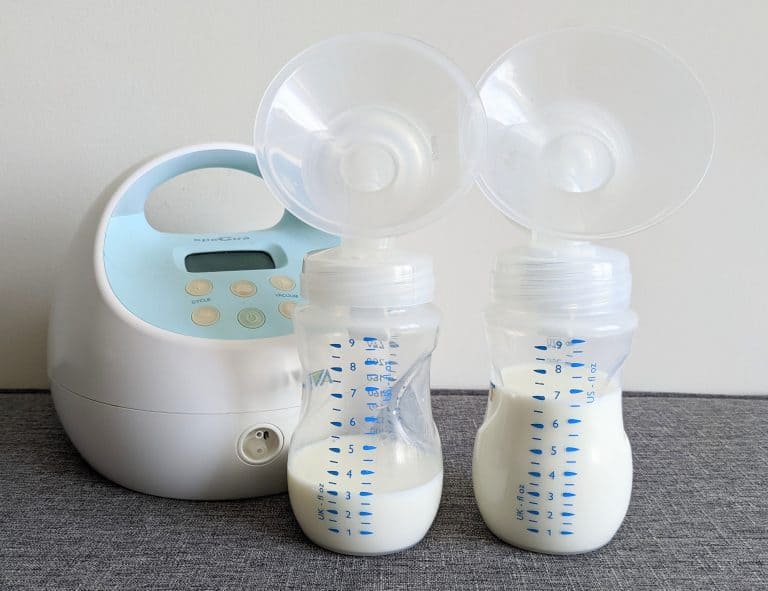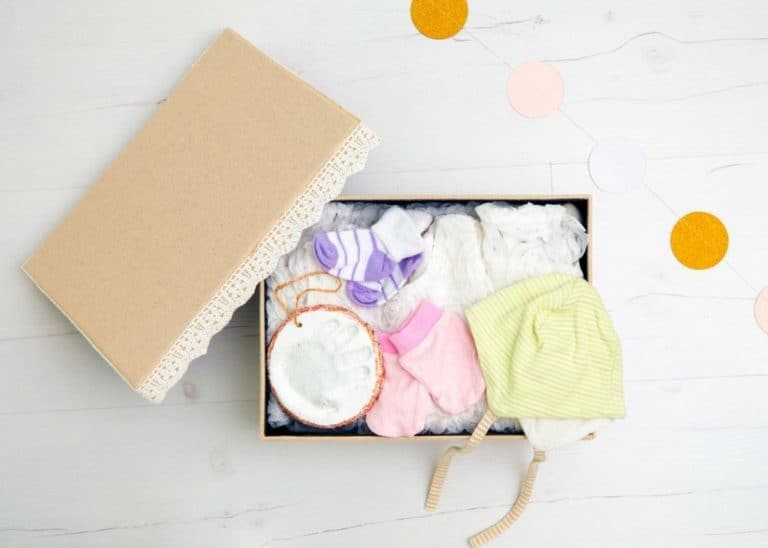How to Serve Mango for Baby-Led Weaning (With Recipes)
Hey mama! Is your baby starting solids soon? When introducing solid foods to your baby, consider trying baby-led weaning (BLW).
This approach allows your little one to skip the traditional spoon-feeding of purées. They will dive straight into appropriately sized finger foods.
BLW puts your baby in control, letting them decide what and how much to eat on their own. But you may be wondering how to serve different items to your baby. One food option to add to your baby’s BLW journey is the delicious and nutritious mango fruit.
Mangoes are not only a great snack option, but they also provide a wealth of health benefits. These tropical fruits are rich in beta-carotene and vitamin C. These are essential for a healthy immune system.
Introducing mangoes into your baby’s diet through baby-led weaning can be done in various ways. So keep reading for more tips on how to serve mango – BLW-style!
This post contains affiliate links, which means I receive a small commission, at no extra cost to you, if you make a purchase using this link. Please see my disclosure for more details.
Introducing Mangoes through BLW
What is BLW?
First, what is baby-led weaning (BLW)? BLW is an approach to introducing solid foods to your infant. This approach allows them to self-feed appropriate finger foods instead of spoon-fed purees.
BLW encourages babies to explore new textures and flavors at their own pace. This helps them develop their independence and motor skills, such as the pincer grasp. Plus, it’s so much fun to watch these new eaters try a new flavor.
Why Choose Fresh Mangoes for BLW
Mangoes are a great first food to choose for BLW. They are a soft, easy-to-eat fruit that’s packed with tons of vitamins. Here are some reasons why mangoes shine as a BLW option:
- Ripe and soft. When fully ripe, mangoes have a soft texture that makes them easy for infants to grasp and gum.
- Nutrient-rich. Mangoes are a good source of vitamins A, C, and E, as well as fiber, which is beneficial for your baby’s digestive health.
- Versatile. You can serve mango in various ways, such as peeled and diced, in a mesh feeder, or as a frozen treat!
- Appealing flavor. Mangoes have a naturally sweet taste that appeals to most babies. This makes them more likely to enjoy and eat this nutritious fruit.
When adding mangoes to your baby’s BLW journey, select ripe, soft mangoes with a fragrant smell. Provide them with appropriately sized pieces to reduce any choking risk.
And as always, supervise your infant during mealtimes. With patience and care, you’ll soon witness your little one enjoy this delicious, nutrient-dense fruit!

Preparation Tips for BLW Mango
Introducing mango to your baby during baby-led weaning can be a flavorful and nutritious experience. Here are some tips and tricks for selecting, cutting, and serving mango to your little one!
Selecting the Right Mango
To ensure a healthy and safe experience for your baby, the best way is to choose a ripe mango.
Unripe mangoes can be sour and cause digestive problems. This is definitely not something you want your baby to experience!
To see if a mango is ripe, press the skin gently. If it gives way under pressure, it’s ripe. Another trick is to smell the mango close to the stem. If it is fragrant, like the air of the tropics, it is ready to eat.
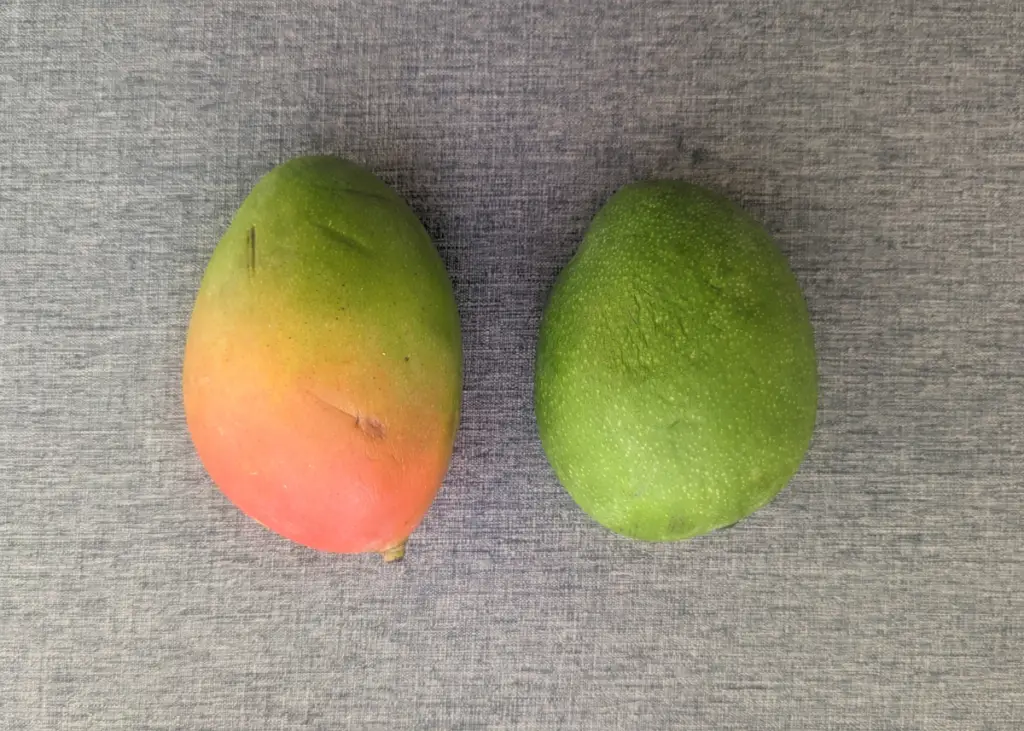
Cutting and Serving Ideas
Preparing fresh mango for BLW should be focused on making it easy for your baby to hold and enjoy as finger food. Follow these steps:
- Remove the pit: Place the mango horizontally on a cutting board and slice the ends off. Then, turn the mango vertically. Imagine a flat pit in the center and cut the fruit as if it were shaped like a cube with four sides. Slice off the right side of the pit and then the left side of the pit.
- Slice into manageable pieces. Cut each mango half into long strips. Ensure the pieces are large enough for your baby to hold and gnaw on but not too small to be a choking hazard. The mango slice should be finger-length.
- Adjust sugar levels if needed. If you want to manage the sugar levels for your baby, consider offering mango in moderation. You can also balance it with other nutrient-dense finger foods.

Choose to Keep the Skin of the Mango On or Off
Since mango flesh can be slippery, here are some options to help your baby grasp the mango easier:
- Keep the mango skin on. Consider keeping the skin on so your baby has a little grippy texture to hold onto.
- Use a crinkle cutter. If you decide to take the mango skin off, you can cut the mango into finger-length strips using a crinkle cutter. The jagged edges of the crinkle cutter will give baby a better shape to grip the mango. This allows them to pick the mango slices easier.
- Coat in textured food. Another way to make the mango less slippery for your baby is to coat the mango slices in textured foods. This can include crushed crackers, baby rice cereal, or chia seeds!
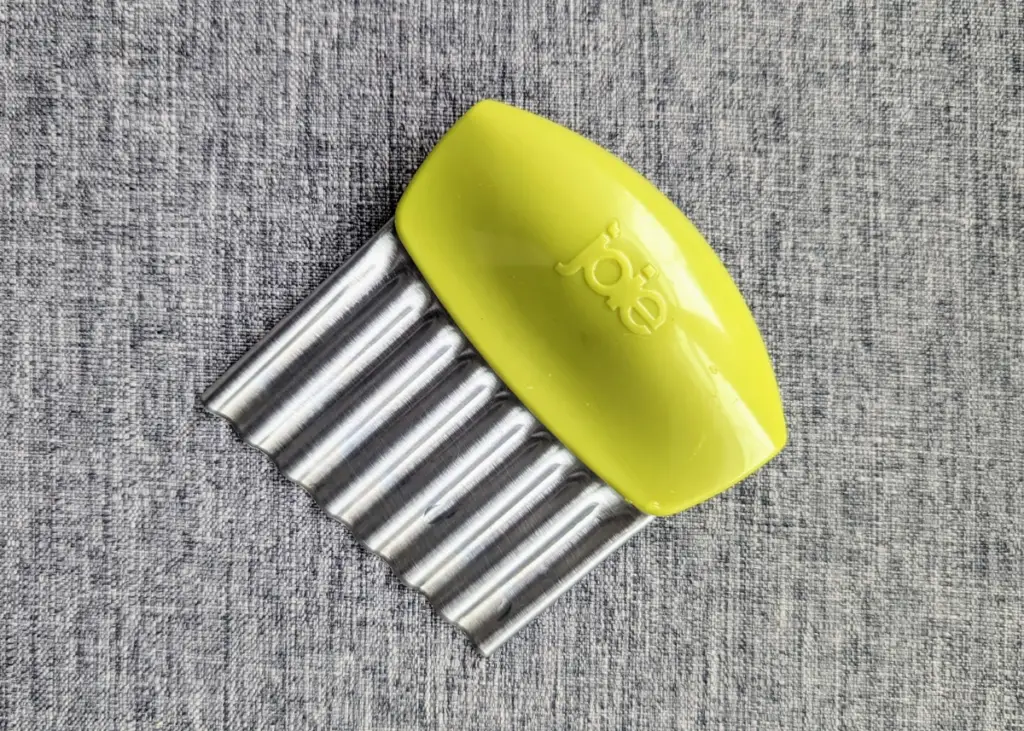
Potential Concerns Serving BLW Mango
When trying BLW with mango, it’s essential to be aware of a few potential concerns for your baby’s safety. In this section, we will discuss possible allergies and choking hazards.
Possible Allergies
Although mango allergies are relatively rare, it’s still important to monitor your baby for signs of an allergic reaction. Some common symptoms of allergic reactions include hives, swelling, difficulty breathing, or vomiting.
If you notice any of these signs, stop giving mango to your baby. Then, consult with your pediatrician for medical advice.
It’s always a good idea to familiarize yourself with the signs of food allergies before introducing any new foods to your baby.
Choking Hazards
Choking hazards are a crucial consideration when starting solids in your baby. To reduce the risk of choking, it’s essential to prepare the mango properly for your baby.
Mangoes can be firm, slippery, and sometimes have stringy flesh, which can be challenging for little eaters to handle.
To minimize these risks:
- Make sure you offer soft, ripe mango.
- Offer the whole mango pit, which provides more stability for your baby to grip and chew.
- Slice mango into thin spears that are easy for your baby to hold and chew.
Remember that each baby’s signs of readiness for BLW are different. Make sure to consult with your pediatrician if you have concerns about your baby’s progress.
Always keep a close eye on your baby during mealtime and be prepared to step in if any choking concerns arise.
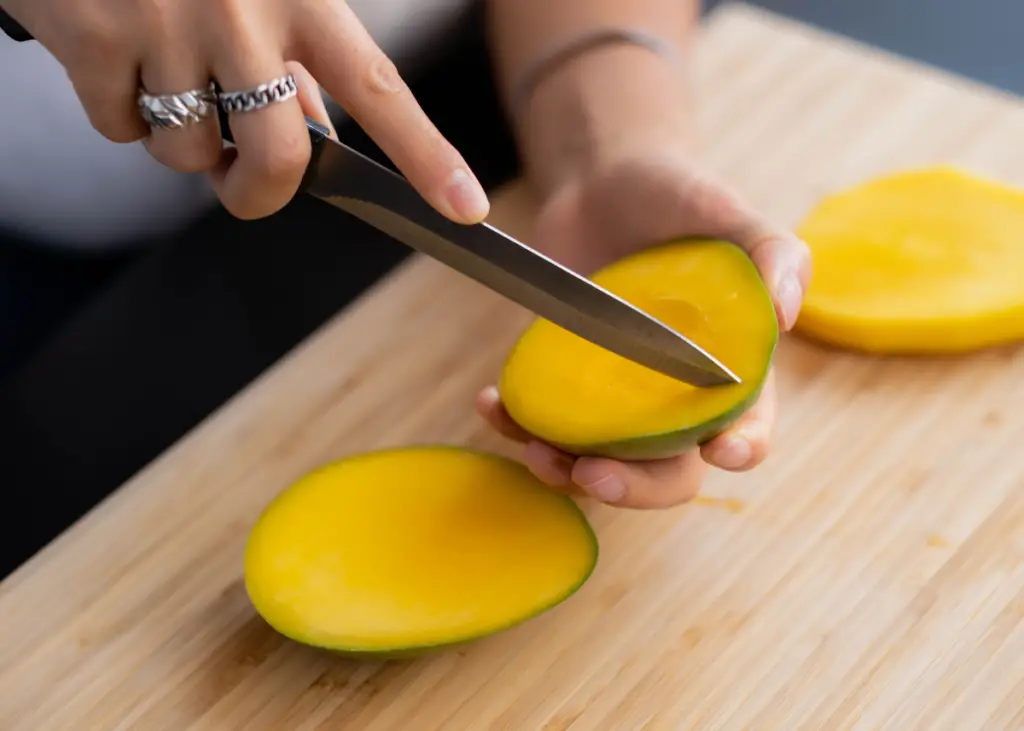
Incorporating Mango in BLW Recipes
Mangoes are a fantastic fruit to incorporate into baby-led weaning recipes. In this section, we’ll explore delicious recipes to include mangoes in your little one’s meals.
Breakfast Options
Mangoes can brighten up your baby’s morning meals and are easy to include in breakfast recipes. For example:
- Mango and Banana Pancakes. Mix mashed mango and banana into your regular pancake batter for added natural sweetness and nutrients. Cook the pancakes as you normally would, and ensure they’re cut into appropriate sizes for your baby to handle.
- Mango and Avocado Toast. Toast whole grain bread and top it with mashed mango and avocado. Cut the toast into finger-sized strips for easy handling.
Desserts and Snacks
Including mangoes in your desserts and snacks can provide delicious treats packed with essential nutrients. Some tasty ideas are:
- Mango and Banana Smoothie. Blend mango, banana, and a bit of yogurt together for a refreshing and nutritious snack. Serve it in a baby-safe cup to minimize spills.
- Mango Blissballs. Try no-bake mango blissballs made with mango, oats, coconut, and chia seeds for a perfect snack or dessert. Ensure that the ball size is appropriate for your baby.
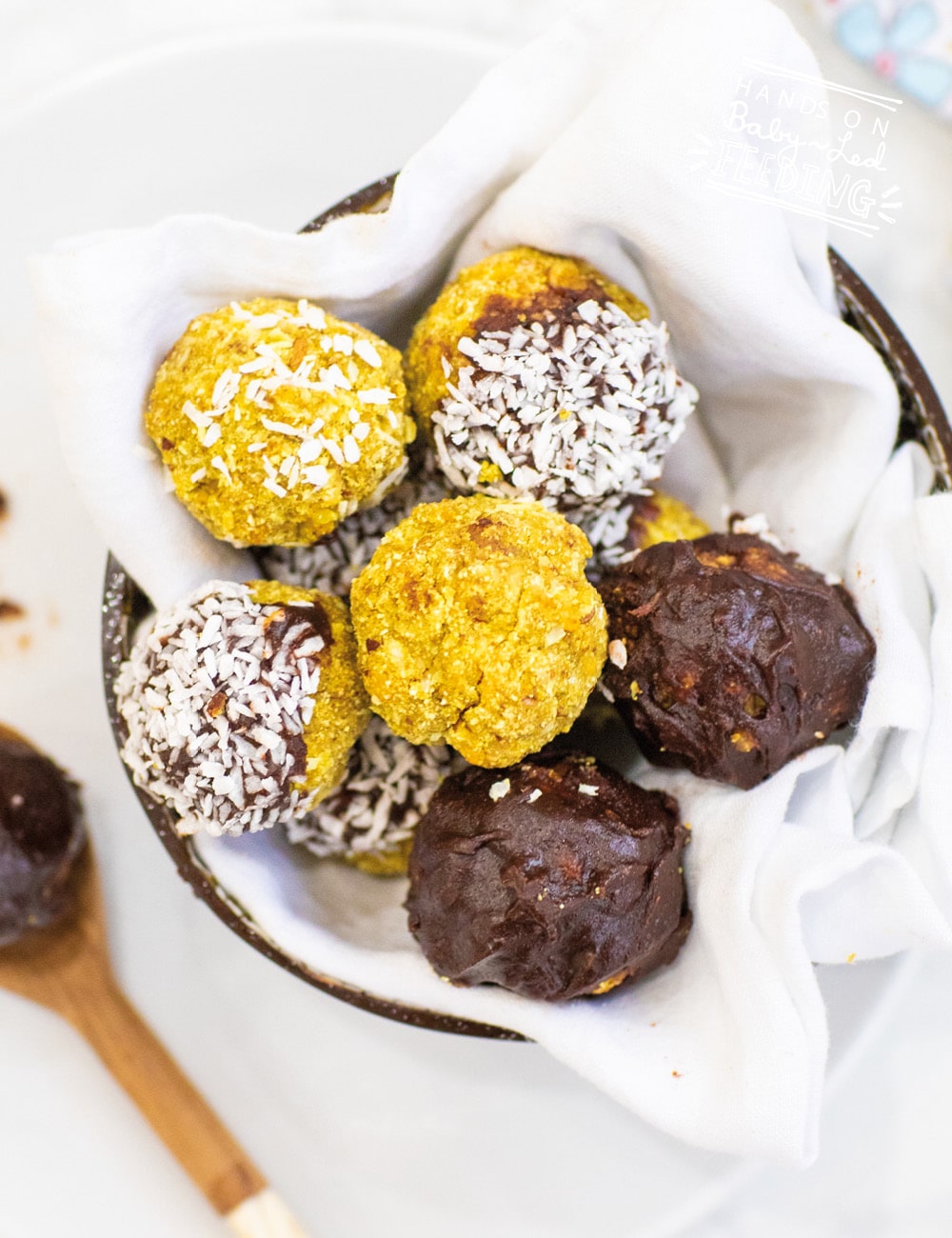
- Mango and Avocado Frozen Pops. Blend mango and avocado in a food processor. Then pour the mixture into ice pop molds. Freeze for a few hours before offering them to your baby as a cool snack or dessert. Make sure the size of the frozen pop is safe for your little one.
Frequently Asked Questions About BLW Mango
Serving BLW Mango to Your Baby
Adding mangoes into your baby’s BLW journey can be both enjoyable and beneficial for their development. Mangoes are not only sweet and juicy, but they also offer a variety of nutrients that can aid in your baby’s overall health.
By adding mangoes into your baby’s BLW experience, you’re not only providing them with a delicious treat but also setting them up for a lifetime of healthy eating habits. Enjoy watching your baby discover the world of flavors and textures for the first time while bonding together over mealtimes!
Related articles that you might like!





